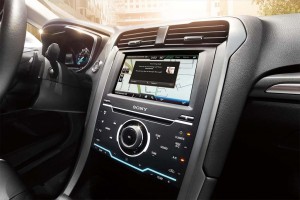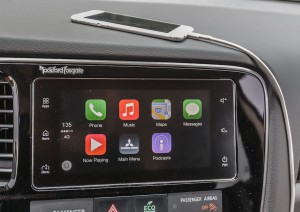Ford is the latest in a growing list of automakers adding Apple’s Siri voice valet service to its cars. But unlike some of its competitors, Ford will allow owners of vehicles dating back as far as the 2011 model-year to add the popular feature to their cars.
The move is expected to impact as many as 5 million Ford owners who will simply need to go online, download the update and then plug it into vehicles equipped with Sync and the maker’s MyFord Touch infotainment system.
Sync “was designed to be flexible and updatable, just like other mobile technologies, so our customers are able to get the most out of their smartphones while behind the wheel,” said Sherif Marakby, director, Ford Electronics and Electrical Systems Engineering.
Offered on the last several generations of Apple iPhones, Siri allows a smartphone user to press a button and ask a variety of questions or issue commands. It can be used to send a text message by voice, set an alarm, check weather or plug an address into the Apple navigation system.
In Ford models equipped with Siri, a motorist simply presses the voice recognition button, rather than the Home button on an iPhone. By pairing the smartphone with Sync, Siri then operates through the car’s speakers and built-in microphone.
Ford has begun to integrate Siri into its latest vehicles, those using the newly updated Sync 3 technology – Ford abandoning the confusing MyFord and MyLincoln Touch names for its infotainment systems. The third-generation infotainment system now relies on an operating system developed by QNX, the Canadian firm that also owns Blackberry.
(Ford betting on new technology to boost demand for updated Escape SUV. Click Here for more.)
In a surprise move, Ford walked away from a partnership with Microsoft which originally developed the Gen-1 Sync. Ford claims the technology has helped it draw in many tech-savvy buyers, but problems with earlier version of Sync also resulted in extensive owner complaints and a sharp slide in such metrics as the annual J.D. Power Initial Quality Survey.
Ford claims to have addressed most of the concerns in the new QNX-powered Sync, among other things significantly simplifying the process of pairing a phone, and making it possible to issue commands using more conversational speech.
A number of studies support Ford’s claim that Sync has helped it sell more cars. One, by AutoTrader, found two out of three U.S. shoppers would switch brands to get the technologies they want. On the other hand, some critics contend that even voice-controlled infotainment systems can cause driver distraction.
(Click Here for the results of a AAA distracted driving study.)
To obtain the software update, Ford owners either can go to a dealer or download the software at http://owner.ford.com/.
In the not-too-distant future, the automaker is looking to make it possible to push software updates wirelessly, much like Apple does to its smartphones. A number of competitors are developing similar capabilities, and Tesla Motors already used that approach to update its Model S battery sedans with the new AutoPilot, a semi-autonomous driving system.
While Ford is now adding Siri capability to its cars, the maker has so far resisted adding the even more advanced Apple CarPlay and the similar Google Android Auto, which would allow motorists to operate key smartphone apps through their infotainment systems. That capability is offered on most 2016 Chevrolet products, among others.
Ford has added similar capability directly through Sync, however, and recently purchased a suburban Detroit firm that specialized in integrating smartphone apps in automotive infotainment systems.
(After long delay, Congress passes new, 5-year transportation bill. Click Here for the breaking story.)


